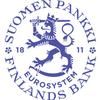Inflation is declining in line with the European Central Bank’s goal, paving the way for an easing of monetary policy
Inflation in the euro area has fallen substantially since its late-2022 peak. In March 2024, its annual rate was 2.4%. Inflation has fallen with the decrease in energy prices and the significant tightening of monetary policy.

“As summer approaches we can start reducing the level of restriction in monetary policy, provided that inflation continues to fall as projected. The biggest risks stem from geopolitics, both the deteriorating situation in Ukraine and the possible escalation of the Middle East conflict, with all their ramifications,” says Governor of the Bank of Finland Olli Rehn.
Growth in the euro area economy has been at a standstill since the end of 2022. This has been attributable to the fall in real incomes stemming from the rise in energy and other prices, and to the decrease in investment and consumption resulting from the higher interest rates and elevated uncertainty. On the other hand, the worst crisis scenarios – especially regarding energy availability – have been avoided. Euro area unemployment is also at its lowest since the introduction of the euro.
Growth is forecast to return to the euro area economy towards the end of this year, largely driven by private consumption, but this could also be delayed. The tensions surrounding the Middle East conflict and Russia’s war in Ukraine could raise energy prices again or bring supply disruptions.
The tightening of monetary policy has contributed over the past year to inflation expectations returning to a level close to the inflation target of 2%. This has led to wage pressures beginning to moderate in the euro area.
At its April 2024 meeting, the Governing Council of the European Central Bank (ECB) took the decision to keep its principal key interest rate unchanged at 4%. The ECB's key interest rates are at a level that is helping considerably to push down inflation. The Governing Council’s future interest rate decisions will ensure that its policy rates stay sufficiently restrictive for as long as necessary. “In June, we will have an updated assessment of the inflation outlook, the dynamics of underlying inflation and the strength of monetary policy transmission. If this were to further increase our confidence that inflation is converging to our target in a sustained manner, we could start to ease the stance of monetary policy and cut interest rates. This assumes there will be no further setbacks, for instance in the geopolitical situation and therefore in energy prices,” says Governor Rehn. The rates on new mortgages have already started to fall slightly, however, as the markets are expecting the ECB to cut policy rates.
The euro area economy needs to improve its productivity performance. Over the medium term, productivity has an impact on both inflation and the level of real interest rates. An important way of boosting productivity is to invest in human capital. A skilled labour force is essential if businesses are to adopt innovations and new technologies. “Improving productivity does not happen overnight. This requires long-term economic policy that supports investment and strengthens companies’ opportunities for growth,” says Governor Rehn.
- Bank of Finland Bulletin publication website (in Finnish)
Keywords
The Bank of Finland is the national monetary authority and central bank of Finland. At the same time, it is also a part of the Eurosystem, which is responsible for monetary policy and other central bank tasks in the euro area and administers use of the world’s second largest currency – the euro.
Subscribe to releases from Suomen Pankki
Subscribe to all the latest releases from Suomen Pankki by registering your e-mail address below. You can unsubscribe at any time.
Latest releases from Suomen Pankki
March 2024 sees modest level of corporate loan drawdowns29.4.2024 10:00:00 EEST | Press release
In March 2024, non-financial corporations (excl. housing corporations) drew down new loans1 from banks operating in Finland to a total of EUR 1.1 billion – the smallest amount in March since 2011. The average interest rate on new corporate loans fell slightly from February 20204, to 5.55% in March. Nearly half of the new corporate loans were taken out by companies in the sectors with the largest amounts of outstanding loans, namely real estate and manufacturing companies. Real estate companies took out 24% of the loans, at an average interest rate of 5.01%. Manufacturing companies took out 21%, at an average interest rate of 5.86%. The average interest rates on new loans to non-financial corporations rose in March 2024 only in the category of small loans of up to EUR 250,000. In this loan category, the average interest rose by 0.29 percentage points from February, to 6.13%. The average interest on medium-sized loans (over EUR 250,000 and up to EUR 1 million) was 5.78%, remaining almost
Svag efterfrågan på företagslån i mars 202429.4.2024 10:00:00 EEST | Tiedote
I mars 2024 utbetalades nya företagslån1 (exkl. bostadsbolag) av banker med verksamhet i Finland för 1,1 miljarder euro, vilket är det minsta statistikförda utbetalningsbeloppet för mars sedan 2011. Genomsnittsräntan på nya företagslån var i mars 5,55 %, dvs. något lägre än i februari 2024. Företagen inom branscherna med den största lånestocken, dvs. fastighets- och industrisektorn, lyfte nästan hälften av de nya företagslånen i mars 2024. Andelen lån till företag inom fastighetssektorn var 24 % och genomsnittsräntan 5,01 % medan andelen lån till företag inom industrisektorn var 21 % och genomsnittsräntan 5,86 %. Genomsnittsräntan på nya företagslån steg endast i kategorin för små lån på under 250 000 euro. Genomsnittsräntan på små lån steg med 0,29 procentenheter från februari och var 6,13 % i mars 2024. Samtidigt var genomsnittsräntan på medelstora lån (över 250 000 och högst 1 miljon euro) 5,78 %, dvs. nästan densamma som i februari. I mars 2024 sjönk genomsnittsräntan (5,34 %) ocks
Yrityslainoja nostettiin niukasti maaliskuussa 202429.4.2024 10:00:00 EEST | Tiedote
Maaliskuussa 2024 uusia yrityslainoja1 (pl. asuntoyhteisöt) nostettiin Suomessa toimivista pankeista 1,1 mrd. euron edestä, mikä on pienin tilastoitu maaliskuun nostomäärä vuodesta 2011 alkaen. Maaliskuussa uusien yrityslainojen keskikorko oli 5,55 % eli hieman alhaisempi kuin helmikuussa 2024. Lainakannaltaan suurimpien toimialojen eli kiinteistö- ja teollisuusalan yritykset nostivat lähes puolet uusista yrityslainoista maaliskuussa 2024. Kiinteistöalan yritysten nostamien lainojen osuus oli 24 % ja niiden keskikorko 5,01 %. Vastaavasti teollisuustoimialan yritysten nostamien lainojen osuus oli 21 % ja niiden keskikorko 5,86 %. Uusien yrityslainojen keskikorot nousivat ainoastaan pienten eli alle 250 000 euron lainojen luokassa. Pienten lainojen keskikorko nousi 0,29 prosenttiyksikköä helmikuusta ja oli 6,13 % maaliskuussa 2024. Vastaavasti keskisuurten (yli 250 000 ja enintään 1 milj. euroa) lainojen keskikorko oli 5,78 % eli lähes sama kuin helmikuussa. Maaliskuussa 2024 myös suurte
BOFIT Forecast for China 2024–2026: Productivity gains key to China maintaining growth22.4.2024 13:04:52 EEST | Press release
The latest forecast from BOFIT, the Bank of Finland’s Institute for Emerging Economies, sees structural and cyclical factors bringing down economic growth over coming years. Growth is expected to slow to roughly 4 % this year and then to 3 % p.a. in 2025 and 2026. The lack of reliable Chinese statistical data makes detailed assessment of the situation challenging. China’s official figures show GDP rose by 5.2 % last year. Alternative calculations by BOFIT, however, suggest that GDP growth has underperformed official estimates in recent years. Economic growth in the first months of this year was fairly brisk (officially 5.3 % in the first quarter) thanks to strong industrial growth. No large changes to the outlook for economy overall have occurred since our October 2023 forecast. We continue to anticipate about 4 % growth this year. Growth is expected to slow to around 3 % in 2025 and 2026. The degraded quality of Chinese statistical reporting makes it increasingly difficult to evaluate
BOFITs prognos om utvecklingen av den kinesiska ekonomin för 2024–2026: för att upprätthålla den ekonomiska utvecklingen i Kina behövs ökad produktivitet22.4.2024 13:04:44 EEST | Tiedote
Finlands Banks forskningsinstitut för tillväxtmarknader förutspår en avmattning i den ekonomiska tillväxten i Kina under de närmaste åren på grund av både strukturella och cykliska faktorer. I år väntas tillväxten vara ca 4 % och stanna kring 3 % under 2025–2026. De statistiska problemen i Kina försvårar bedömningen av det ekonomiska läget. BNP-tillväxten i Kina var i fjol 5,2 % enligt den officiella statistiken. BOFIT bedömer att landets faktiska ekonomiska tillväxt under de senaste åren varit något långsammare än vad som anges officiellt. Den ekonomiska utvecklingen i början av året har varit relativt stark, pådriven av industrin, men ingen större förändring har skett i den samlade bilden av ekonomin i förhållande till den föregående prognosen. Enligt BOFITs prognos växer den kinesiska ekonomin ca 4 % i år, medan den ekonomiska tillväxten under 2025–2026 förutspås stanna kring 3 %. Kvaliteten på statistiken har delvis försämrats ytterligare, vilket försvårar bedömningen av det ekonom
In our pressroom you can read all our latest releases, find our press contacts, images, documents and other relevant information about us.
Visit our pressroom